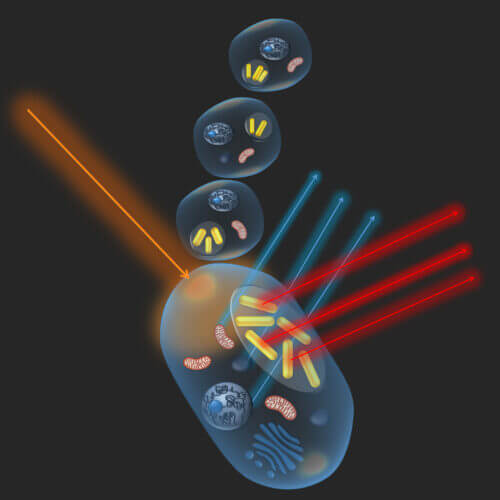Bar-Ilan University researchers are using gold stick nanotechnology for spectrophotometric scattering to identify killer and rescue cells used in the immune system

In a study published in this journal NANO LETTERS Researchers from Bar-Ilan University showed a simple solution to the issue of imbalance in the body by the dispersion effect using gold nanorods (GNR). Gold-based nanoparticles are known to have a unique property of high optical absorption and special dispersion of a light beam. By manipulating the scattering effect and adjusting the coating of the GNR, the researchers were able to identify changes in the optical properties of M1 and M2 macrophages, respectively, and use these changes as a measure to monitor physiological changes in the body.
The researchers used flow cytometry to track changes in the deficit of the GNR-loaded macrophages and to identify the unique optical scattering of the GNR. Flow cytometry is a method widely used in medicine for the identification of a population of cells labeled by a fluorescent substance, but in this case it was used for identification without such labeling, but based only on the difference in scattering by gold nanosticks. This unique method allowed the researchers to identify a certain type of nanomecalon coating that caused a greater selectivity of M2 cells compared to M1 cells.
Every biological system uses defense mechanisms against disease processes caused by local, environmental or biochemical changes. It is the white blood cells that play the role of "police" in our immune system. A certain type of white cells called macrophages are the most efficient and highly specialized fighters, and have both the potential for unique recognition and the power to ward off and neutralize foreign invaders, in addition to having the ability to heal wounds. According to the allocation of their functions, the macrophages are divided into two main types, M1 and M2 cells. M1 cells have specialized as highly effective killer cells, while M2 cells are mainly involved in healing roles.
In the normal state, a state of health, there is a balanced equilibrium between the two types. However, in disease states such as infections by viruses, bacteria or parasites or in inflammatory states following arteriosclerosis, cancer or arthritis, the balance between M1 and M2 cells is disturbed and a change occurs in favor of one of the populations, depending on the type of crisis. If such changes could be monitored, they could be a diagnostic and predictive tool for disease states. So far, no diagnostic tool has been found that can detect the M1/M2 ratio that exists between these cells in body fluids or in a blood sample without any labeling of the cells using fluorescence methods.
Flow cytometry
"Our approach of optical scattering using GNR to identify M1 and M2 macrophages and differentiate between them opens a gateway to a new pathway for cell identification by flow cytometry that is aided by enhanced scattering by nanoparticles localized inside the cell" - said Dr. Ruhira Chakraborty, Principal researcher in the laboratory of Prof. Dror Pixler at the Kopkin Faculty of Engineering and the Institute of Nanotechnology and Advanced Materials of Bar-Ilan University. Prof. Dror Pixler, director of the Nanotechnology Institute of Bar-Ilan University, who headed the research along with Prof. Ran Kornofsky and Dr. Dorit Leshem from the Bilinson Hospital, adds: "The continued development of this technique will lead us to create a new treatment method or an advanced diagnostic tool which may predict the stages of progression of diseases such as cancer, arteriosclerosis and leprosy through the examination of body fluids or simple blood samples."
This research was supported by the National Science Foundation (ISF) and by the Planning and Financing Committee of the Council for Higher Education in Israel.

3 תגובות
Tiflool is a biocentromatic reaction that affects the right lobe of the brain if gamma-frequency ruebacilli symptoms appear that are measured by a btl device with nanometric calibration.
Really fascinating article.
Well done to you for the research and to the scientist for publishing the article.
What is treatment?